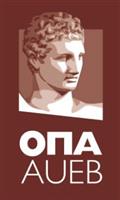Modern Services for the Identification of / Access to / Management of the library areas and the AUEB Library Collections (RFID-Radio Frequency Identification)
The management and control of the circulation of material (borrowing, reserving, renewals, returns, etc.) are significant functions of the AUEB Library. The smooth and efficient handling of these functions are particularly important for the services that the Library provides daily to the academic community. At the same time, however, the functions related to circulation management are time-consuming and require considerable time from the library staff due to the volume and frequency of the transactions.
With the implementation of the integrated RFID (Radio Frequency Identification) system, the Library automated and modernized the circulation management services that library staff provide every day to users. The RFID system can manage the following three basic library services:
- Procedures for the borrowing process (circulation)
- Organization of the collections (inventory, tracking, and re-organization of the material on the library shelves)
- Improved security for the collections
In order to complete the RFID project, it was necessary to retrospectively mark each item in the printed materials collection (about 70,000 items) with RFID tags and to convert each barcode to RFID code. When this was done, the next step was to install the requisite RFID hardware as well as the corresponding software in order to enable the interface to the Integrated Library System (ILS) in the AUEB Library. At the same time, a user self-service kiosk was installed; the kiosk is fully integrated with the ILS so that users can borrow and return books by themselves, without the intervention of library staff. Finally, the security system for the library's collections was upgraded.
The benefits which have been accrued are briefly described below:
- Upgraded security for the Library's collections. Marking each item with an RFID tag has contributed to the increased security for handling books.
- Increased productivity and satisfaction for library staff. With the RFID technology, librarians are now able to do more in less time. Many of the time-consuming tasks, such as monitoring in-coming and out-going material or search for items on loan which have been lost of misplaced, are now fully automated.
- Improved service to users. Using the RFID system, library users are now able to borrow many items at the same time. This speeds up the borrowing process both in the automated system and at the circulation desk. Consequently, there is improved communication between users and library staff and librarians are more responsive to users' needs.
- User self-service (kiosk). The automation of the borrowing and return procedures by the users themselves, using the special kiosk, supports user self-service.
- Better organization of the Library's collections. The automatic location of material on the shelves, easier replacement of library printed materials, and the automation of inventory-taking, allow the library staff to manage and to organize, in the best and most efficient way, the collections that are in the Library area.





